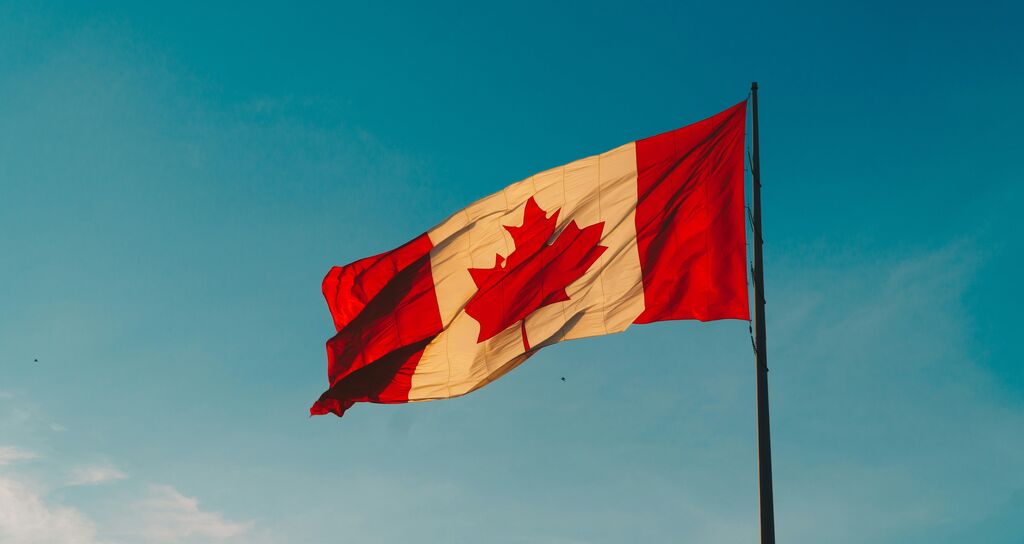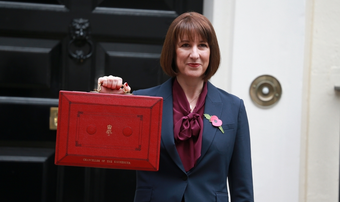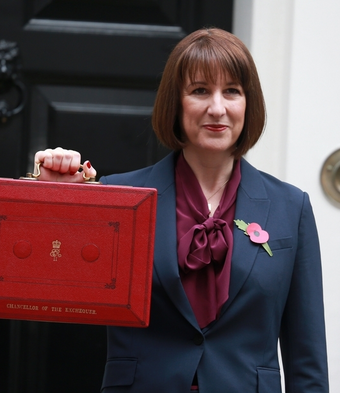Lessons from Canada: why 'safeguards' are doomed to fail

In 2016, Canada’s Minister of Justice introduced a bill that had many similar features to Kim Leadbeater’s bill currently before the UK Parliament. Since then, Canada has become the euthanasia capital of the world. More than 70,000 Canadians have had their lives ended prematurely and euthanasia is now the fifth-leading cause of death. Nearly a decade into our euthanasia experiment, here are some reasons why the so-called “safeguards” are doomed to fail.
1. The Criteria are Entirely Subjective
Initially, in Canada, only someone eligible for public healthcare, age 18 or older and with decision-making capacity, with a “grievous and irremediable medical condition”, with death being “reasonably foreseeable”, making a voluntary request “not made as a result of external pressure”, and having provided informed consent could have their life ended by a doctor or nurse.
Similarly, Leadbeater’s bill proposes that assisted dying be restricted to a registered patient in England or Wales, aged 18 or older, with “the capacity to make a decision to end their own life”, who is making a voluntary request free from coercion, who is able to express “a clear, settled and informed wish to end their own life”, and whose natural death should be “reasonably be expected within 6 months”.
Devising eligibility criteria for ending human life might have an air of rationality to it, but it is entirely subjective and betrays the underlying view that some lives are less worthy of living than others.
Why should the timeline be 6 months, rather than 12? Or, what about those whose diagnosis is not terminal, but who might be enduring even worse suffering during any given point of their lifetime? When the supposed ‘safeguards’ are so arbitrarily designed, they can easily be eroded.
The most prominent UK campaign group on this issue, Dignity in Dying, claims that “Assisted dying allows a dying person the choice to control their death if they decide their suffering is unbearable.” Remarkably, the word “suffering” does not appear even once in the entire 38-page text of Leadbeater’s bill.
If assisted suicide is seen as a compassionate means to end suffering, then there is no reasonable basis on which is will remain limited. If it is regarded as a good, a right, or a healthcare service, then it will always be expanded on the grounds of equality.
2. Wrong Predictions are Needlessly Deadly
As Janet Eastham recently highlighted in The Telegraph, doctors fail to accurately predict patient life expectancy half the time. She notes, “Out of 6,495 occasions when doctors or nurses predicted a patient would die within six months to a year, more than half of the patients – 3,516 – defied expectations and survived.”
Similarly, persons living with disabilities, chronic pain, and other illnesses often defy their prognoses and exceed all expectations. And, we know that medical professionals are notorious for ranking patients’ quality of life significantly lower than their patients would rate their own quality of life.
The initial Canadian bill only specified that death be “reasonably foreseeable”, which is exceedingly ambiguous. Yet, the requirement in Leadbeater’s bill that natural death “reasonably be expected within 6 months” creates a mirage of precision. If doctors become the final arbiters of projected life expectancy, despite the high propensity of error, then we will no longer have correct statistics of survival because the very patients who would have survived, in defiance of all expectations, will have been killed.
Leadbeater’s bill also links terminal illness to “medical condition[s] which cannot be reversed by treatment.” This conflation devalues the lives of persons with disabilities and, as one disabled friend of mine put it, “makes disability automatically linked to death, despite the fact that not all disabilities have a life-ending prognosis or element.”
3. Doctor Involvement is Self-Selective
The term “coordinating doctor” appears 93 times in the PDF of the MP Leadbeater’s bill and the term “independent doctor” appears 32 times; theoretically, these doctors are supposed to ensure patients genuinely meet the eligibility criteria, and turn down any who do not do so. However, the doctors who become most actively involved in the process will not end up being very independent after all.
When Canada first legalised euthanasia, there were many doctors and nurses who did not want to participate. Those who did, however, quickly secured government funding, formed professional associations, and started devising curricula and programming.
The doctors who do assisted suicide are self-selecting, and constitute a mutually-affirming group. The so-called “coordinating and independent” doctors will be one and the same.
In her memoir, Canadian euthanasia doctor Stefanie Green recalls having explained to a colleague, “‘Mr. Winslow has requested an assisted death, so I’m here to help assess if that’s going to be possible. I’m from the MAiD team.’” Dr. Green then proceeds to admit, “In truth, there was no MAiD team: It was a fictitious club that I made up on the spot to try to sound more official. ‘MAiD is ‘medical assistance in dying.’”
The approval for euthanasia will be eased by the normalisation that happens through specific doctors having self-selected to be involved in the act.
4. Raising Euthanasia Unsolicited is Coercive
One of the most egregious problems with MP Leadbeater’s bill is that nothing prevents physicians from raising euthanasia with their patients unsolicited. In Canada, we have found that many people are being repeatedly reminded by doctors that they are eligible for state-sponsored assisted suicide. This is degrading and demoralizing, and obviously contributes to patients’ despair and sense of abandonment.
As Roger Foley, a disabled Canadian put it, “With me, it’s completely traumatised me [to have euthanasia suggested]. With me, it’s this overlying option where, in my situation, when I say I’m suicidal, I’m met with ‘Well, you know, the hospital has a program to help you with that if you wanted to end your life.’ That didn’t exist before MAID was legalised, but now it’s there.”
While the bill says that doctors are not obligated to raise the idea of assisted dying with patients, it clearly states that “nothing [...] prevents a registered medical practitioner exercising their professional judgement to decide if, and when, it is appropriate to discuss the matter with a person.”
Informing a person that they qualify to have their life ended prematurely is abusive. Since it is never in a person’s interest to be killed, nobody should have homicide offered to them as a proposal.
5. Family And Friends Are Excluded
In Canada, family members and friends have been devastated by the secrecy and privacy surrounding their loved ones’ euthanasia deaths.
A father in my hometown had to spend hundreds of thousands of dollars in legal fees to obtain an injunction to prevent his 27-year-old daughter with autism from being killed on her scheduled death date. Similarly, a husband managed to get an injunction at the eleventh hour just before his wife was set to be killed by a doctor who boasts having euthanised more than 400 people.
Understandably, patient privacy is important. However, who would not consider it a red flag that a patient had informed no one in their life about their plans to end it?
MP Leadbeater’s bill does not require any disclosure to or involvement of family or friends in this life-or-death decision. There is only a recommendation that, “in so far as the assessing doctor considers it appropriate, [they] advise the person to consider discussing the request with their next of kin and other persons they are close to.”
The request for euthanasia is often a symptom of relational breakdown. Conceding to a person’s loneliness and brokenheartedness without addressing their real emotional and existential pain is an injustice to them.
6. Institutions are not Adequately Protected
In Canada, our Criminal Code has been clarified to say, “nothing in this section compels an individual to provide or assist in providing medical assistance in dying.” While this would seem to protect conscientious objectors, there is nothing to protect publicly-funded institutions being forced to euthanise patients on site.
This has proven to be a disaster in Canada, both for facilities that do not want any killing on their premises and, more importantly, for patients who might wish to be treated in a MAID-free space.
A hospice in British Columbia was defunded and then evicted and expropriated for not allowing euthanasia at the 10-bed facility. A Quebec judge ruled against a Montreal hospice being exempt from participating in euthanasia. And, a family has sued St. Paul’s Hospital in Vancouver for not providing euthanasia there and requiring patients seeking MAID to transfer elsewhere.
And while the aforementioned institutions are faith-based, there are many persons of no faith who desperately want there to be euthanasia-free healthcare spaces, where they are free from being offered assisted suicide themselves, and not surrounded by persons who are undergoing it.
In fact, outspoken disability rights advocate Catherine Frazee has said, “On the question of religious hospitals, despite being a lesbian couple, Patricia and I would tolerate life-size crucifixes in the treatment room if it meant being safe from MAiD.” She is quoted in this brilliant article by Gabrielle Peters, a disabled writer and policy analyst, who concludes, “Canada has made disabled people a killable class, and hardly anyone has considered the impact this would have on us. This country must maintain MAiD-free health-care spaces.”
MP Leadbeater’s bill has the same problem as the Canadian law: while medical practitioners will not initially be compelled to euthanise their patients, there is no protection for institutions and so no guarantee that patients will have access to euthanasia-free healthcare spaces.
The UK is credited with being the birthplace of palliative care, through the work of Dame Cicely Saunders at St Christopher’s Hospice; there are no guarantees that even hospices like that would be exempt from having to have assisted suicide carried out on their premises.
7. Expansion Can Precede Review
There is nothing in MP Leadbeater’s Assisted Dying bill to prevent euthanasia from being expanded before the 5-year review is conducted.
According to the Bill, the Secretary of State is required to undertake a review of the Act after the initial 5-year period following enactment and to prepare and publish a report.
In Canada, the bill that eroded safeguards and expanded euthanasia even further - permitting deaths which were “not reasonably foreseeable”, and thus expanding the criteria to include those with disabilities - was introduced prior to the 5-year statutory review that had likewise been mandated by our legislation. The study to review how our euthanasia regime was going was also “interrupted by the federal election.”
And so, there is no guarantee that the planned review of the Assisted Dying law would happen on deadline or would prevent the erosion of existing safeguards even before its release.
The exercise of writing all of the above has further persuaded me of the radical extent to which MP Leadbeater’s bill risks setting up the UK for a Canada-like euthanasia regime.
Even though she has vouched that her bill will have the “strictest safeguards in the world”, the fact of the matter is that all of the safeguards in the actual bill are doomed to fail.
It turns out that killing simply cannot be made safe.
Amanda Achtman works to prevent euthanasia and encourage hope across Canada and beyond through her project, Dying to Meet You. She is also the Ethics Education & Cultural Engagement Lead at Canadian Physicians for Life.






